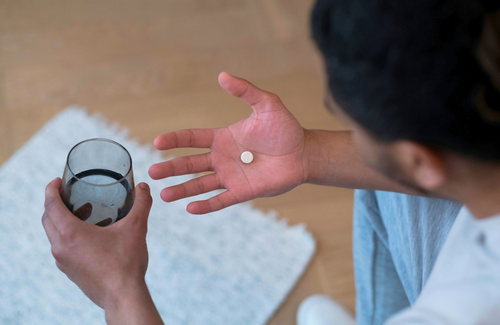
Taking doxycycline as post-exposure prophylaxis after sex – known as doxyPEP – did not reduce the likelihood of sexually transmitted infections (STIs) among cisgender women in Africa as it does for gay and bisexual men, according to recently published study results. Actual use of the antibiotic was found to be low, however, suggesting doxyPEP might still work for women if adherence is higher.
“Our findings emphasize the need for preventive options for STIs that are effective and acceptable among women,” Dr Jennell Stewart of the Hennepin Healthcare Research Institute in Minneapolis and colleagues concluded. “Further trials investigating doxycycline PEP among persons who had been assigned a female sex at birth are warranted. Adherence to preventive medicines needs to be better understood and supported for biomedical prevention to be effective.”
Bacterial STIs such as chlamydia, gonorrhoea and syphilis can lead to serious complications for women, including pelvic inflammatory disease, chronic pain, infertility, pregnancy complications and increased susceptibility to HIV, so effective prevention interventions are urgently needed.
DoxyPEP involves taking a 200mg dose of doxycycline within 72 hours after condomless sex. It was found to be effective for men who have sex with men in the French IPERGAY HIV pre-exposure prophylaxis (PrEP) trial and in a trial of gay and bisexual men and transgender women in San Francisco and Seattle who were either living with HIV or taking PrEP. As reported at the 2022 International AIDS Conference, the latter study found that doxycycline reduced new cases of chlamydia and syphilis by about 80% and gonorrhoea by more than 50%.
A study of young women in sub-Saharan Africa did not show the same benefit, however. Results from the dPEP Kenya trial were first reported at last year’s Conference on Retroviruses and Opportunistic Infections (CROI) and have now been published in The New England Journal of Medicine.
The trial, conducted from 2020 to 2022, enrolled 449 cisgender women ages 18 to 30 (median 24 years) in Kisumu, an area with high STI rates. Most (65%) were never married, but 83% had a primary sex partner. Nearly 70% had given birth at least once, but they were not pregnant at baseline and about 60% were using hormonal contraception
About a third said they had a new sex partner in the previous three months, and the median number of partners during this period was two. A majority (about 66%) did not use a condom the last time they had vaginal sex, and few reported anal sex. About 37% reported a recent history of transactional sex or sex work. All the women were taking tenofovir disoproxil / emtricitabine (Truvada or generic TDF/FTC) PrEP and had been on it for a median of about 7.5 months. At baseline, 63 women already had chlamydia, 17 had gonorrhoea and two had syphilis.
The women were randomly assigned to either take doxycycline after sex (n=224) or receive standard care, which was quarterly STI testing and treatment after diagnosis (n=225). Eighty women became pregnant during the study, and doxycycline use was suspended during pregnancy and breastfeeding. Each week, the participants received text messages asking about their frequency of sex and doxycycline use. At quarterly follow-up visits over 12 months, they completed questionnaires about their behaviour, STI symptoms and doxyPEP use during the past two weeks. In addition, blood samples were drawn to test for HIV and syphilis and cervical swabs were done to test for chlamydia and gonorrhoea.
Overall, follow-up was good. Almost all follow-up visits were completed and the weekly survey response rate was nearly 80%. The women reported a median of four sex acts and said they took four doses of doxycycline per month.
But doxyPEP did not significantly reduce the likelihood of STIs. Over a year of follow-up, there were 50 new cases of the three STIs in the doxycycline group (25.1 per 100 person-years) and 59 cases in the standard care group (29.0 per 100 person-years), which was not a significant difference. Twelve women had more than one new STI diagnosis.
Looking at the specific STIs, there were 35 new cases of chlamydia in the doxyPEP group and 50 cases in the standard care group, and there 19 and 12 cases of gonorrhoea, respectively. Syphilis was rare. None of these differences met the threshold for statistical significance. Results were similar regardless of contraception use, history of transactional sex or whether they had an STI at baseline.
Doxycycline was generally safe and well tolerated with no drug-related serious adverse events. The most common adverse effect in the doxyPEP groups was nausea (7.2%), which diminished over time. There were no new cases of HIV in either group. Three women reported “social harms” related to doxy PEP use, including verbal or physical violence.
Why did doxyPEP fail?
The researchers noted that Kisumu has a high background level of antibiotic-resistant gonorrhoea. In fact, all the women who tested positive for gonorrhoea either at baseline or during follow-up showed evidence of drug resistance. However, none of the chlamydia samples showed evidence of resistance. This might help explain why doxyPEP appeared to be somewhat more effective at preventing chlamydia compared with gonorrhoea. In contrast, drug-resistant gonorrhoea was much less common in the trial of doxyPEP for gay and bisexual men and trans women in the United States.
Anatomical differences between women and men do not seem to play a major role in explaining the divergent results of the trials. Recent research, also presented at CROI 2023, suggests that doxycycline drug concentrations in the vagina are sufficient to prevent all three STIs. In the dPEP Kenya trial, rectal and pharyngeal (throat) STIs were not assessed, “thus it cannot be inferred whether doxycycline is protective at those sites in women,” the study authors noted.
The women in the trial reported decent, though imperfect, adherence. Based on quarterly questionnaires, doxycycline was taken after 80% of condomless sex acts. In more than 90% of the weekly text surveys, 55% of the women said they took doxycycline on at least as many days as they had sex.
"Adherence to preventive medicines needs to be better understood and supported for biomedical prevention to be effective.”
But objective adherence assessment told a different story. The researchers measured doxycycline in hair samples from 50 randomly selected women in the doxyPEP group, which shows exposure during the past month. While 56% had detectable doxycycline in samples from at least one follow-up visit, the antibiotic was detectable in only 29% of samples across all visits, or 33% after excluding visits when doxycycline was on hold due to pregnancy or other reasons. This suggests that 44% of the participants in the doxyPEP group may not have taken any doxycycline. However, the fact that there were no new HIV infections suggests effective use of PrEP.
“Objective assessment of hair samples for doxycycline use suggested that doxycycline was not taken during the majority of months, which is discordant with participant-reported use,” the study authors wrote. “Low detection of doxycycline among participants assigned to receive doxycycline PEP offers a primary explanation for the differing results between this trial and other studies of doxycycline PEP.”
Low adherence was also a factor in trials that showed tenofovir disoproxil / emtricitabine PrEP was not as effective for HIV prevention among cisgender women as it is for gay and bisexual men and trans women.
“Although the findings are disappointing, the trial provides a needed opportunity to reconsider how to strategically inform the design and conduct of biomedical intervention trials involving women of reproductive age,” Dr Jeanne Marrazzo, a long-time HIV researcher who was recently appointed to lead the US National Institute of Allergy and Infectious Diseases, wrote in an accompanying editorial.
She noted that tenofovir alafenamide/emtricitabine (Descovy) for HIV PrEP is still not recommended for cisgender women because no trial data are available, and although the dapivirine vaginal ring is effective and acceptable for HIV prevention, it is not available in the United States or in Europe.
“The calculus of invoking STI or HIV prevention with a given sex act may be informed by a person’s sexual network, perception of partner risk, and ability to define the timing and terms of how sex occurs,” she continued. “For chemoprophylaxis against STI, we need to do better in working out the science of drug delivery, the motivation and context for product use, and the background antibiotic susceptibility to inform the design of interventional trials. With women bearing the brunt of the long-term consequences of untreated STI, we owe them no less.”
Stewart J et al. Doxycycline prophylaxis to prevent sexually transmitted infections in women. New England Journal of Medicine 389:2331-2340, 2023.
DOI: 10.1056/NEJMoa2304007
Marrazzo J. Doxycycline postexposure prophylaxis for STIs in women -- uncertain benefit, urgent need. New England Journal of Medicine 389:2389-2390, 2023.
DOI: 10.1056/NEJMe2311948

